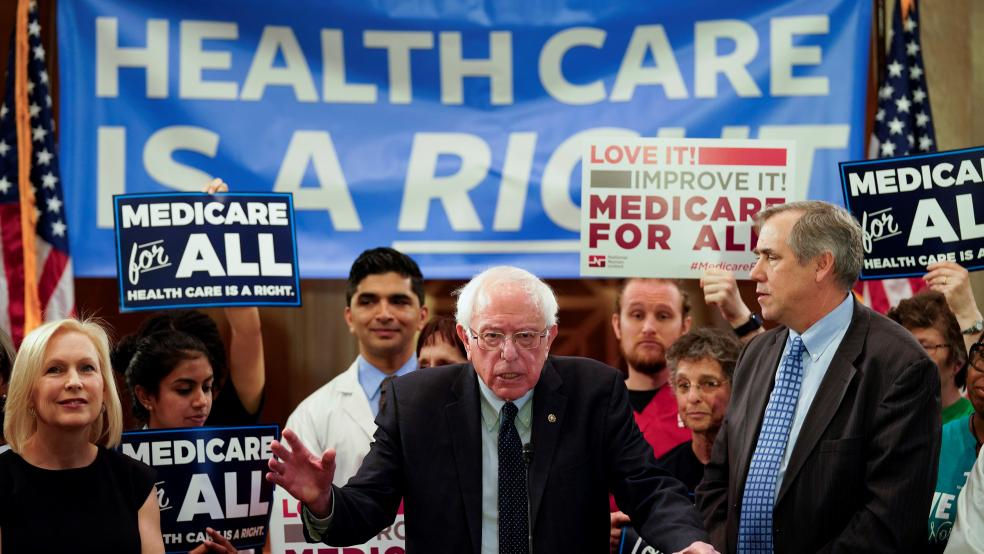Bernie Sanders’ Medicare-for-All plan would save the country about $450 billion a year on total health care spending while preventing nearly 70,000 deaths, according to a study published over the weekend in The Lancet.
In the analysis, a team of epidemiologists led by Alison P. Galvani of the Yale School of Public Health applied the provisions of Sanders’ plan to real-world spending in the U.S. in 2017. They concluded that Medicare for All would have cost just over $3 trillion that year, or $458 billion less than the actual total. The analysis found that per capita costs would decline, resulting in lower costs overall, even with millions more people covered. And providing universal coverage would save 68,531 lives per year, the researchers.
Here are some key details and assumptions from the study:
A new analysis: Previous estimates of the cost of Medicare for All have reached significantly different conclusions, ranging from a roughly 16% increase over current national health-care spending levels to a 27% decrease. This latest study relies on a new analytical tool to measure the impact of different provisions within Medicare for All as applied to real-world data (you can review and adjust the parameters of the analysis in the Single-Payer Healthcare Interactive Financing Tool).
Big savings with a single-payer system: The researchers found that the proposed system would reduce total health-care expenditures by about 13% based on 2017 spending levels. Savings would come from a variety of sources. Here are some of the major savings the researchers found with Medicare for All, based on the 2017 total health care expenditure of nearly $3.5 trillion:
- Reducing pharmaceutical prices via negotiation: $219 billion
- Improving fraud detection: $191 billion
- Reducing reimbursement rates for hospitals, physician, and clinical services: $188 billion
- Reducing overhead: $102 billion
- Eliminating uncompensated hospitalization fees: $78 billion in savings.
Revenues: The Sanders proposal would impose new taxes while reducing the overall cost burden on both businesses and households. The revenues look like this, according to the analysis:
- Payroll tax: A 10% tax on employers would raise $436 billion. By comparison, employers currently pay $536 billion on insurance premiums, the equivalent of a 12.3% tax rate.
- Household income tax: At the individual level, households would pay a 5% income tax above the standard deduction, yielding $375 billion per year. By comparison, households currently pay about $738 billion on premiums and service fees.
- Wealth tax: A new tax on net worth over $21 million would produce about $109 billion a year.
The bottom line: There are some methodological questions about the analysis, and the politics of transitioning to a single-payer system remain as complicated as ever. You might hear Sanders talk up this study during a debate or on the campaign trail, but it will likely do little to change minds in the debate.



